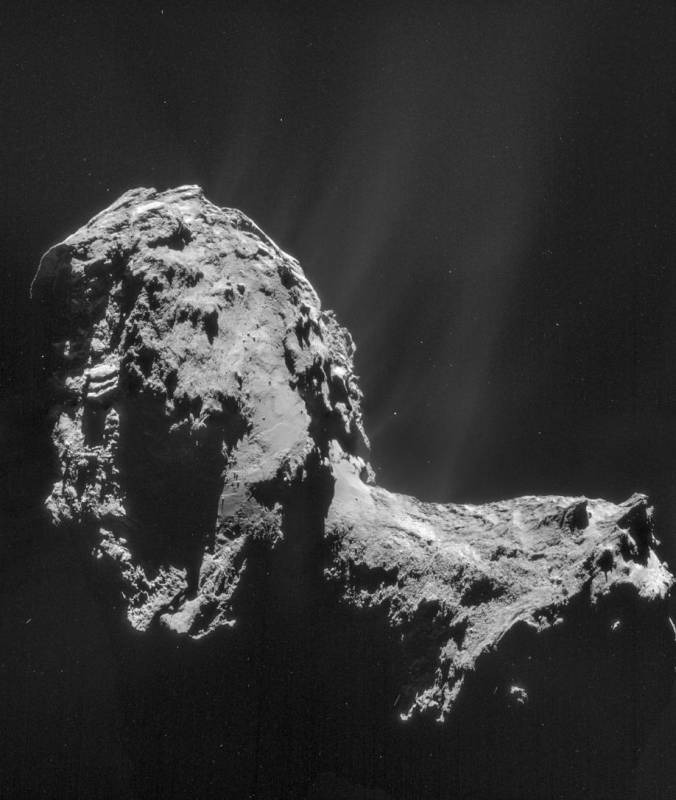This One-Of-A-Kind Comet Aurora Could Help Make Crewed Mars Missions Safer
A mysterious ultraviolet glow spotted for the first time around a comet could help pave the way to protecting astronauts from solar radiation, NASA has said today. The new research into data gathered by the Rosetta mission to comet 67P/Churyumov-Gerasimenko overturns an old theory about the unusually-shaped rock's aura, and presents a far more fascinating possibility.
Rosetta's mission ended in September 2016, when the European Space Agency (ESA) probe crashed into 67P/C-G after orbiting it for more than two years. While the instrumentation may be destroyed, the data sent back from the probe is still being examined, and coming up with new discoveries.
These newly-assessed results from NASA instruments onboard Rosetta are a good example of that. Originally, observations of the comet had indicated what scientists named "dayglow," where light photons interact with the gas envelope, or coma, that surrounds a comet's nucleus. By blending information from tools like the Ion and Electron Sensor (IES), the Alice ultraviolet instrument, and the MIRO which tracks water molecules, along with other sources, researchers found something very different.
Instead of "dayglow," it seems that the comet's aura is in fact a far-ultraviolet aurora. Such a phenomenon isn't necessarily unusual on Earth or other planets, where conditions like the Northern Lights have shown how electrically-charged particles can create light shows in the atmosphere. However they've never been observed on comets before now.

"The glow surrounding 67P/C-G is one of a kind," Marina Galand of Imperial College London, lead author of the study, said of the findings. "By linking data from numerous Rosetta instruments, we were able to get a better picture of what was going on. This enabled us to unambiguously identify how 67P/C-G's ultraviolet atomic emissions form."
It's electrons from the solar wind that are credited with the glow. These charged particles from the sun interact with gases in the coma of the comet, in the process breaking apart molecules like water there. The end result is atoms that give off far-ultraviolet light, not visible to the naked human eye but captured on Rosetta's array of sensors.
A glimmering comet on its own may not be a huge insight, but it's what that data suggests about solar activity more broadly which could be vital for future space missions. One of the biggest challenges that NASA faces when it considers upcoming missions – manned and otherwise – to the Moon, Mars, and beyond, is keeping astronauts and equipment safe from solar radiation. That can have huge health implications, as well as impede how well systems operate.
Comet 67P/C-G's emissions could lead to a greater understanding of how the solar winds evolve, as the aurora around the rock will have changed over time. That insight into "space weather" could help develop new flight plans or strategies, or even help with the formulation of better solar radiation shielding, as human passengers face a long voyage further out into the solar system.
